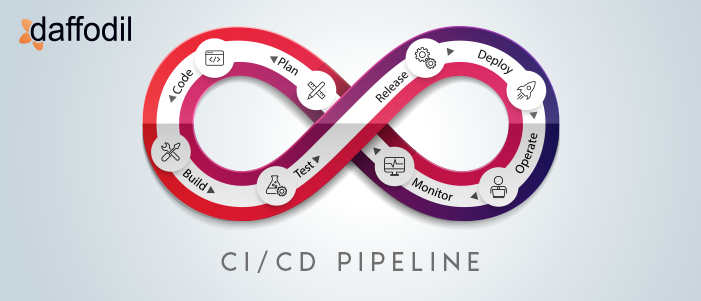
DevOps is a buzzword in the software development industry. There is increased adoption of DevOps culture for simplifying and automating the SDLC cycle.
While DevOps practices are applicable at each stage of software development, continuous integration (CI) and continuous deployment (CD) are considered as the crux of it. These practices enable the development and operations team to coordinate, ensuring that frequent product releases and changes are committed to the production.
However, CI/CD is one of the least understood concepts of DevOps. In the later segment, we will discuss what is continuous integration, continuous deployment, what’s the difference between them, how they can boost SDLC, and how to integrate CI/CD into a software solution.
What is Continuous Integration (CI)?
These days, software development cycle is complex. Multiple technologies, tools, and teams work together to build software and launch it into the market.
If we particularly talk about the development team, there are multiple contributors working in collaboration to make deliveries possible. Adopting continuous integration makes this easy.
Continuous Integration (CI) is the practice of automatically integrating changes in code from multiple contributors into a single project repository. This is made possible with the use of tools that automate processes and checks the new code’s correctness before integration. In this course, a version control system like Github, BitBucket has an important role to play. These systems not only maintains a history of code but also enables automatic checks on quality, syntax style review, etc.
CI promotes small and frequent code integrations into software in production without breaking the existing functionalities. This is because the build servers run automated tests on merged code to identify bugs. Since testing is performed at an early stage of the SDLC, the changes can be validated against any errors and delivered to the production. This, as a consequence, supports faster time-to-market of the product.
What is Continuous Deployment (CD)?
Continuous Deployment (CD) is a software release strategy wherein a piece of code is committed to the production environment after passing the automated testing phase. Once the changes are made, they become visible to the users.
Continuous Deployment is often confused with Continuous Delivery. Continuous Delivery is an extension to Continuous Integration wherein the new code is generally handed off to the quality analysts (QA) and operations team. In this case, the code is pushed to a staging server rather than the production server. Continuous Deployment, on the other hand, does not require the changes to be manually reviewed by verified. Instead, automated tests are performed and the code is directly pushed to the production server.
Continuous Integration and Deployment: Discussing the Benefits
- When CI/CD pipeline is integrated with a product, the changes pushed to the production environment won’t have a huge impact on the overall application. This means there will be fewer unintended consequences.
- CI/CD reduces the Mean Time to Resolution (MTTR). Since the codes pushed to production are smaller in size, it is easy for the team to identify the fault and then fix it.
- Testing a code becomes easier for QA team (if done manually). Moreover, the QAs can be saved from writing long, complex scripts for automating the testing process.
- CI/CD minimizes the backlog of non-critical errors as they are identified during automated testing and fixed.
- Since there are frequent releases and code deployment to production, the time-to-market can be significantly reduced.
- End-user involvement in the product and their feedback makes it easy for stakeholders to understand the market and make relevant changes in the product for improved user experience.
Want to Integrate CI/CD to Software Development?
While CI/CD pipeline integration has got a number of benefits for software development, it is recommended to consider it for complex, large-sized projects, team, and budget. If you are giving a thought to C/CD adoption and want to know if your project needs it or not, then set up a consultation session with our DevOps consultation who will guide you will most valuable suggestions.



